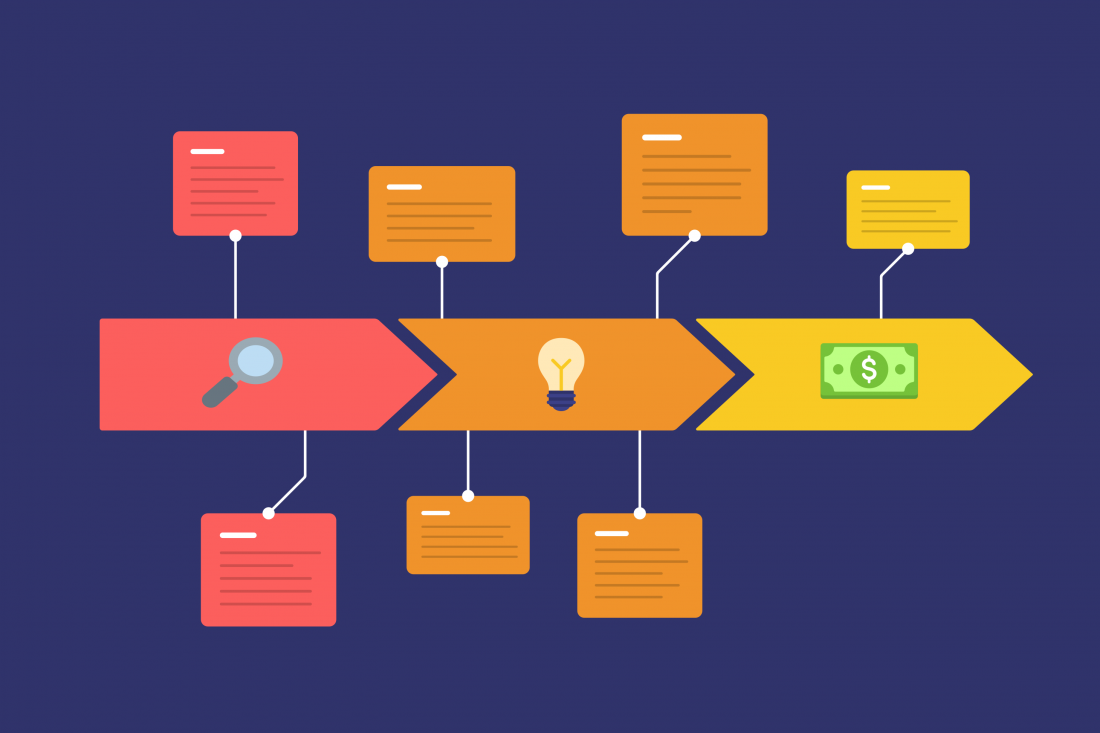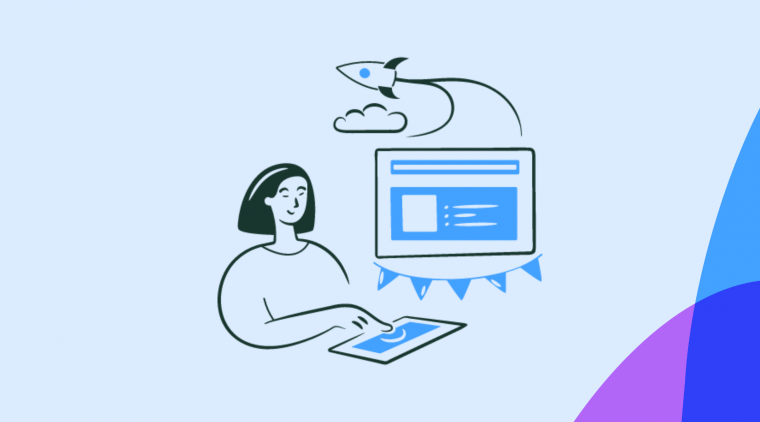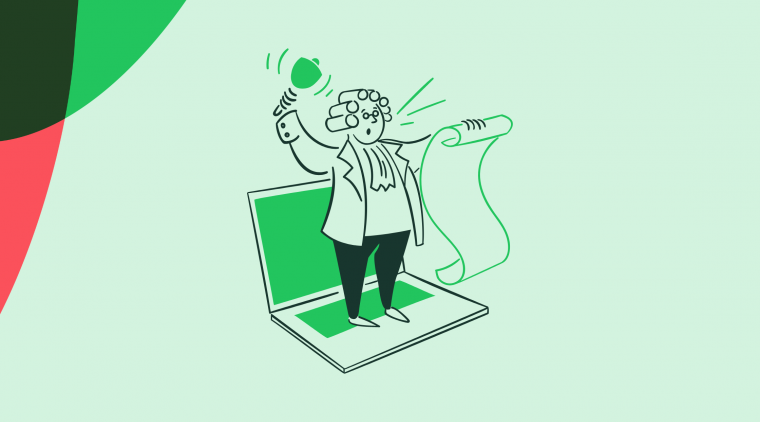Journey mapping is key to understanding how your users navigate and understand your tool. It's a brilliant way of visualizing processes that customers go through to reach their goals. In this article, we'll examine how you can effectively gain insights into your users' pains, "aha!" moments, and overall experience.
What is a customer journey map?
A customer journey map, also known as a user journey map, is a visualization of all the interactions that your customers have with your company.
It illustrates how customers engage with your company—from the very first touchpoints of awareness (of your product, or even the problem you are solving) all the way through to customer engagement, user onboarding, and beyond.
And journey mapping can take many forms, from a simple diagram to an illustration, or even a spreadsheet. The main goal of a customer journey map is to place you in the shoes of your customer and walk along their journey through your funnel.
This customer journey map becomes the foundation that informs different operational aspects of your business—product marketing, user onboarding, customer success, and user feedback—and how you can optimize these areas to better serve the customer needs.
The customer journey map will help you to understand where any customer experience challenge stems from, and how you could improve those experiences.
What are the benefits of journey mapping?
Looking for more qualified leads? If you know the profile of those who most benefit from your product, then you can generate more leads in a cost-effective way.
Want a lift in your conversion rate? Nailing down your value proposition with your target audience can reap great benefits.
Need to extend your customer lifetime value? Yep, understanding the changing needs of your customers at every point along their journey through your funnel will help improve retention and boost long-term CLV.
Ultimately, the customer journey map is the foundation for how you can align different teams and make company-wide improvements.
What are the stages of a customer journey?
Your customer journey map will mirror your sales funnel, and it conceptually addresses the same question: how can you increase the number of people aware of your solution, and ultimately drive more of those leads into paying customers?
The main difference between your journey map and your sales funnel is the focus: external (your customer) vs internal (your teammates and employees).
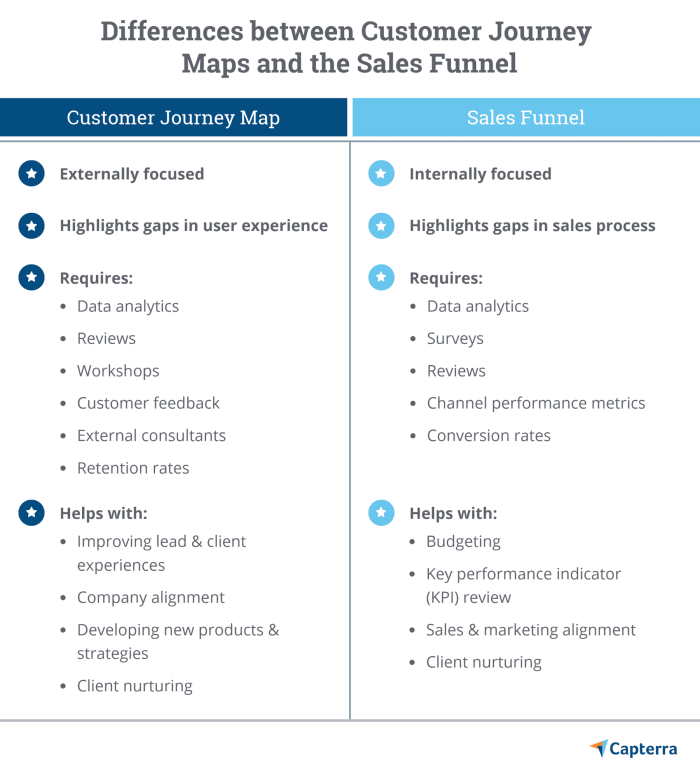
Your journey map will span time, from initial awareness until the post-purchase customer support and success efforts.
It can also include online and offline interactions, which Wootric shows here:
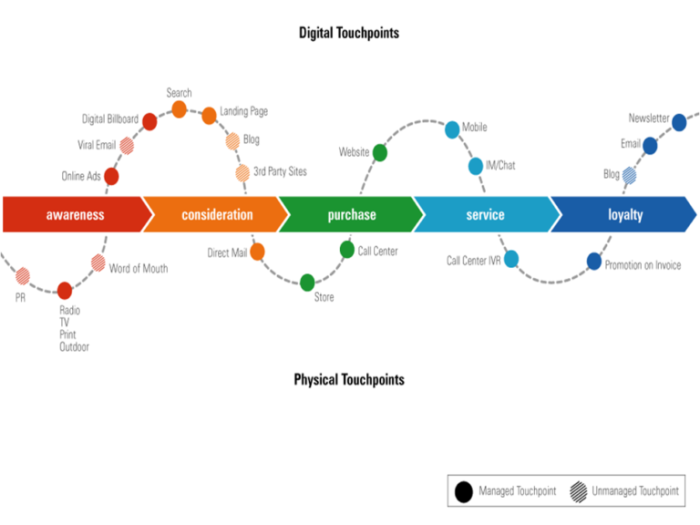
Customer journey maps can quickly become complicated if they aim to include too many details and edge cases.
The image above captures five general stages in the customer journey:
Awareness: How did they learn about your company? What are the main marketing channels, and what messages are communicated at this stage?
Consideration: What questions do your prospects have? What are their objections or challenges to becoming paying customers? How do they gather information at this stage to inform their purchase decision? What are their motivations and goals at this stage?
Purchase: What is driving prospects to purchase, or not purchase?
Service: What challenges are customers facing once they become customers? What does their experience look like in terms of onboarding? Are they able to get the necessary help, when they need it?
Loyalty: How long do customers stick around before churning out? What is the pattern of customer referrals? Of upsells?
How to create a customer journey map
You can break the process of creating a customer journey map into four main steps:
Defining your priorities and goals
Understanding your customers
Building a skeleton structure for your customer journey map
Filling in your customer journey map
I've covered each step in more detail below, so you can follow along.
Step 1: Identify your priorities and goals
Establishing the goals and priorities of the customer journey map upfront will ensure that it is not simply a meaningless task, but instead that it helps guide important business decisions.
Without a clear set of goals, you will find it difficult to pull actionable insights from the journey map.
Focus on a specific customer persona or business goal, e.g. improve conversion rates, or 30-day customer retention, so you can base your journey map on concrete details and jobs to be done.
Action items
It’s always better to teach with real examples, so here you go:
I am working with one client now on building out a customer journey map: a video-hosting SaaS product called Vidalytics.
Our goal is to build a scalable strategy to improve customer retention, and the first step towards that is to improve the onboarding flow. With a 14-day free trial, it’s critical that new users reach a few milestones in order to realize the value of the product and continue forward on a paid plan.
As you might imagine with a video hosting company, the milestones are:
1. Upload a video
2. Publish/embed a video
3. Create conversion tracking
Identifying our priorities, we get:
1. Improve our customer onboarding: Send relevant messaging to customers at the right cadence to ensure that they complete key milestones within their freemium experience.
2. Help more users upload videos: The number of uploaded videos per user is the main metric for defining an improved onboarding experience, it's a key "aha!" moment. After all, without any videos hosted on the platform, it is impossible to get value from the product.
Step 2: Define your customers
The next step in creating the journey map is to understand the customer at the center of the journey map.
Remember, your customer journey map is not a one-size-fits-all experience that applies to your entire customer base. Likewise, even within the same customer or user segment, there are individual paths from start to finish.
However, the potential impact of a customer journey map is directly related to how deeply you understand your customer.
Start by selecting one or two of your most common buyer personas; maybe you have some customer personas that were created, or maybe you have a notion of what they are, passed down through the “tribal knowledge” of the company.
You may even have some form of a customer persona document created, which could be as simple as this:
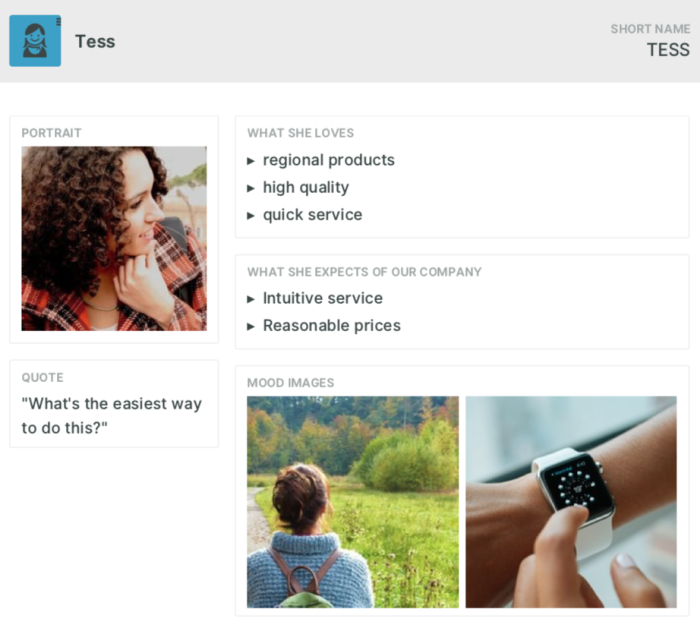
Whatever you are using, you want to frame the personas around some high-level characteristics:
How did they hear about your company?
What are their goals, and what problems are they trying to solve?
What is their level of experience or expertise in the field?
Ideally, you are able to populate these personas with data, qualitative and quantitative: demographic data from Google Analytics, surveys, questionnaires, or any other sources at your disposal.
The more that you are able to inform your personas with data, the less risk you run of doing a bad job and just reinforcing existing beliefs.
One of the benefits of creating this journey map is that it forces your thinking beyond the beliefs held internally at the company, and forces you to think in terms of the customer experience.
Action items
Answer this: Who is this journey's focus customer?
For Vidalytics, the main value proposition is that it is built specifically to drive more conversions. Thus, the customer types that find it most valuable are direct response marketers – affiliates, infopreneurs, and educators.
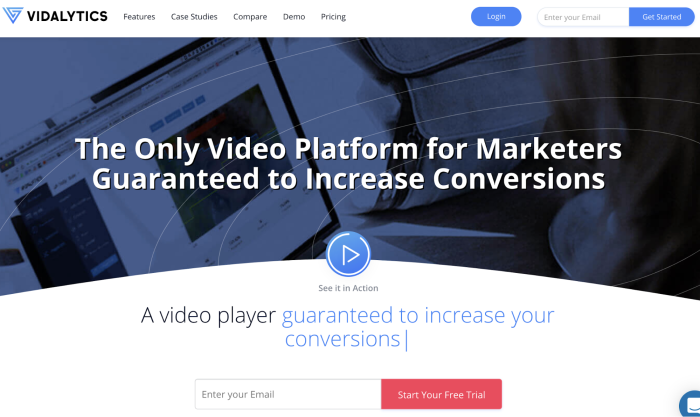
The homepage does a good job of disqualifying visitors who aren’t marketers interested in increasing conversions.
So, we can create a quick sketch of the customer that we will build this customer journey map for:
Who: A direct response marketer who makes money by driving traffic to a page and relying on video to convert customers. We’ll call this persona Vinny the Video Marketer...
Goals: Vinny wants a reliable service to host Video Sales Letters (the term for videos that pitch a product or service online), and wants to understand how to optimize videos to make more money.
Challenges: Vinny wants to make more money, both by driving more traffic to his pages as well as converting that traffic more efficiently.
Expectations: Speed, cost-effectiveness, reliability, and insight are Vinny’s priorities.
There are obviously many more ways to create a multi-dimensional customer persona, and as you think about the customers that you have interacted with and their perspectives, you will find that you can piece together a persona that accurately illustrates the traits, desires, and pains of your customers.
Step 3: Note down the current customer experience at each stage
The easiest way to start building the framework of a customer journey map is by jotting down some notes in a spreadsheet. Going across, you have the stages of the customer journey from awareness to retention and expansion.
At each stage, you are taking a snapshot of what your customers are experiencing at the time.
Adam Richardson, in this Harvard Business Review article, suggests using the following criteria:
Actions: What is the customer doing at this stage?
Motivations: Why do they want to do this?
Questions: What do they need to know in order to move to the next stage?
Barriers: What is making it difficult to move to the next stage?
Action items
Make a copy of this template for your own map and customize it to your users' needs, goals, and expectations at every stage of their journey.

Step 4: Fill in your customer journey map
You have done the necessary groundwork of understanding why you are creating a customer journey map, who you are building your map around, and what the customer mentality is at the different stages.
Now the rubber meets the road, and you can plot out the journey using our customer journey map template.
Action items
Add your notes for each stage of the journey to the customer journey map template and flesh out any missing details.
It doesn't have to be pretty. Here is a rough first pass at what we did for Vidalytics.

And once you have several iterations, buy-in, and input from different teams, then you can make it a piece that is visually pleasing to the eye. Maybe something like this:
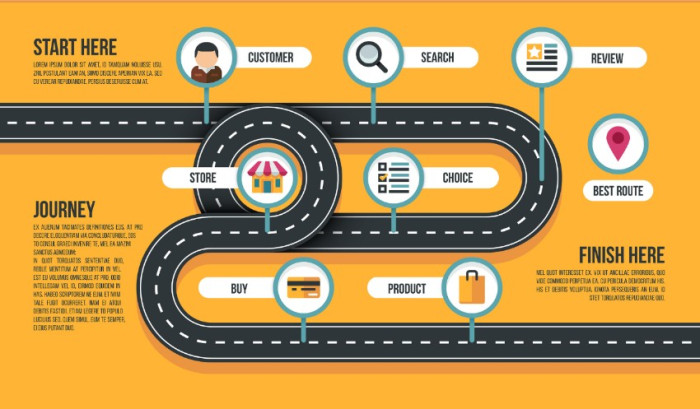
Software for your journey mapping
There's a wealth of tools out there to get you started on your user journey mapping journey.
Google Sheets
Okay, it's not fancy, but it gets the job done. What else do you need, really?
Here’s the link to get started with the simple customer journey map template that I used.
CXMap
If you want a more specific tool, you can use something like CXMap, which has enough features at the free tier to get started. It will get you something like this:
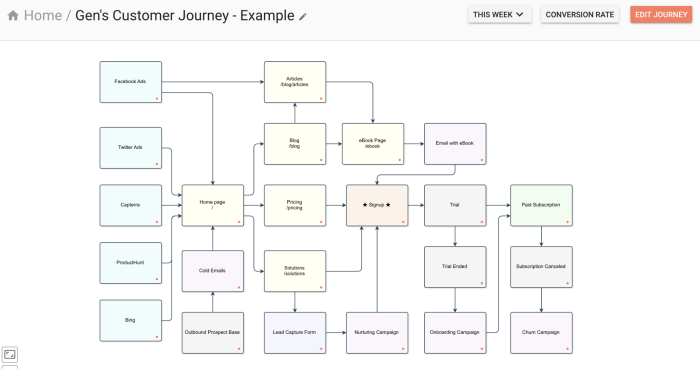
LucidChart
LucidChart helps build visual diagrams and has the functionality to help with customer journey maps too, like the one below.
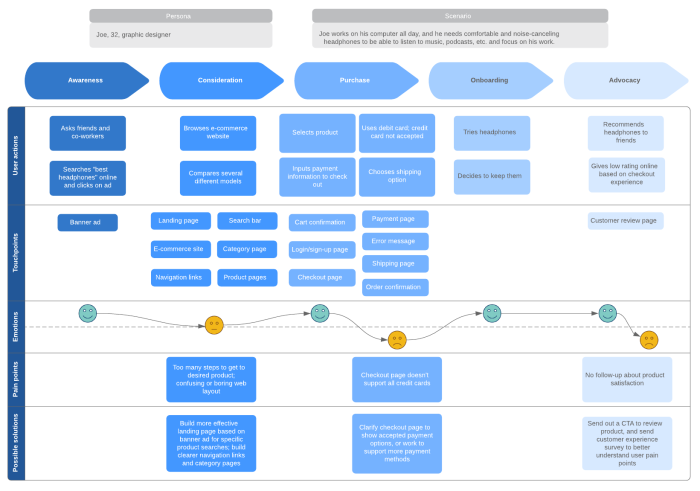
Wrapping up the process of journey mapping
The goal here is not to just crank out a customer journey map and check it off of your “should do” list. A few closing thoughts:
1. Make it useful: Maps should be driven by a specific purpose and be actionable; learn more about what your customers need at different points in time, and how you can position your product to help them solve their problems and meet their goals.
2. Start simple: There is no “right” way to create a map, as every company has unique circumstances by which they acquire and engage customers. However, remember that “great is the enemy of good”. Getting something together this week is better than having a distant future plan for a beautiful and robust customer journey map.
3. Keep it human: The most successful companies are deeply customer-centric, e.g. aware of the customer's needs and wants, challenges, concerns, goals, and motivations. Remember that these are people and their experiences are at the core of this journey map!
The cherry on top is that spending time building out the user and customer journey maps will help you understand your customer's needs at every stage in their lifecycle, and more importantly, how you can help them achieve their goals with your product.
This will help build customer love, increase customer happiness, and keep them around longer. In turn, you will have improved your retention to support a more profitable business.
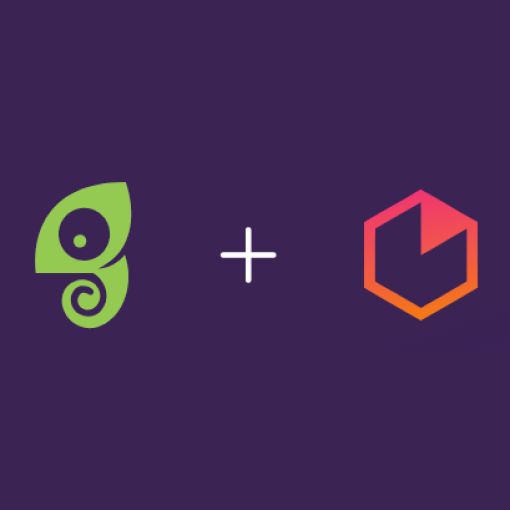
Optimize the entire user journey
Deploy in-app campaigns that convert with Heap and Chameleon. Get visibility over how tours impact every KPI that matters 📊
Customer Journey Maps: The Path to User Delight
Gen Furukawa is the founder of Retainable, helping B2B SaaS companies reduce churn and increase profits.

